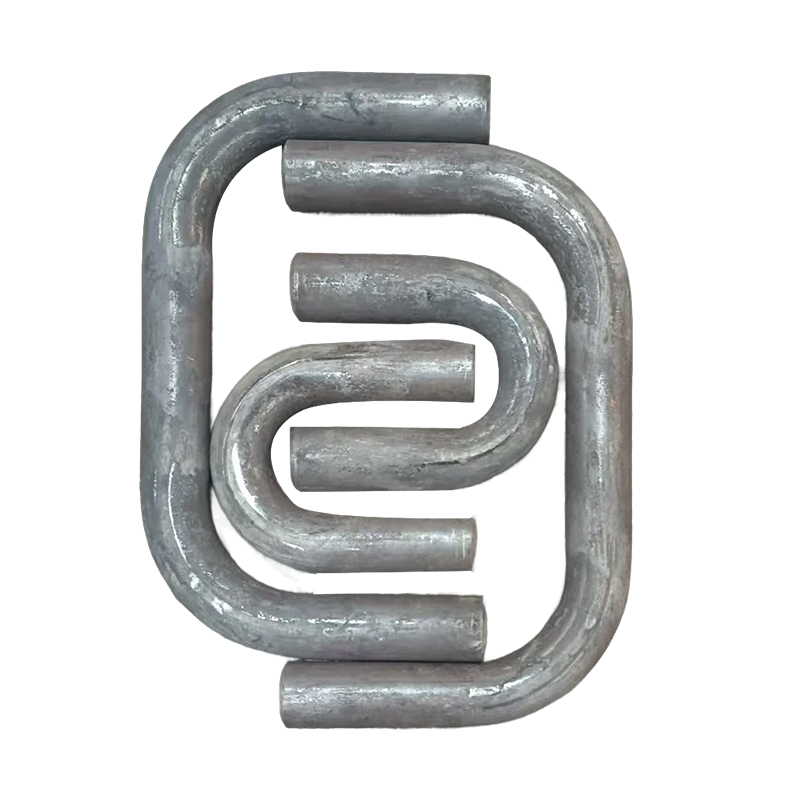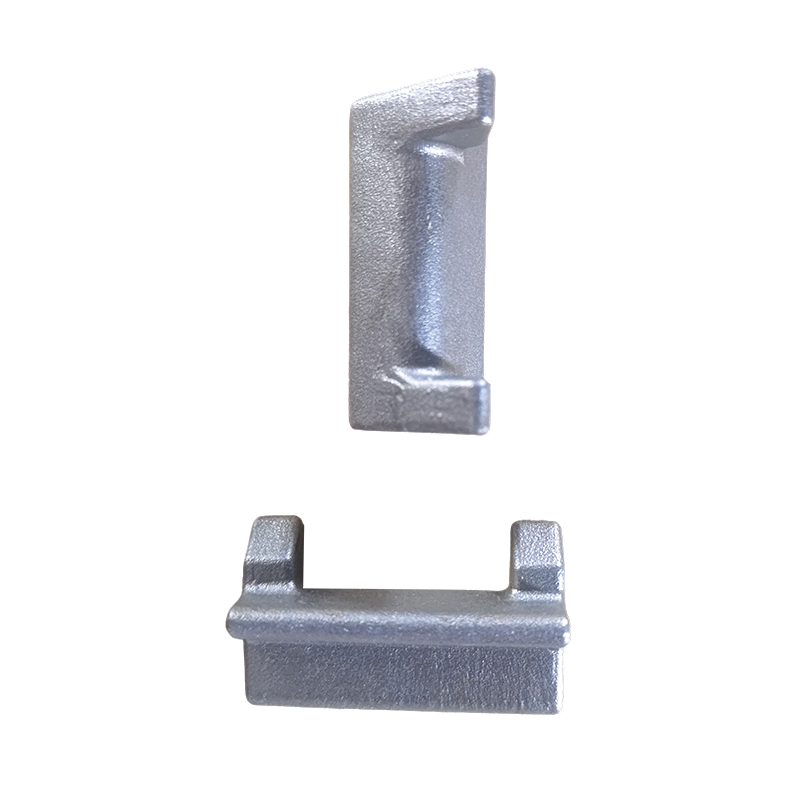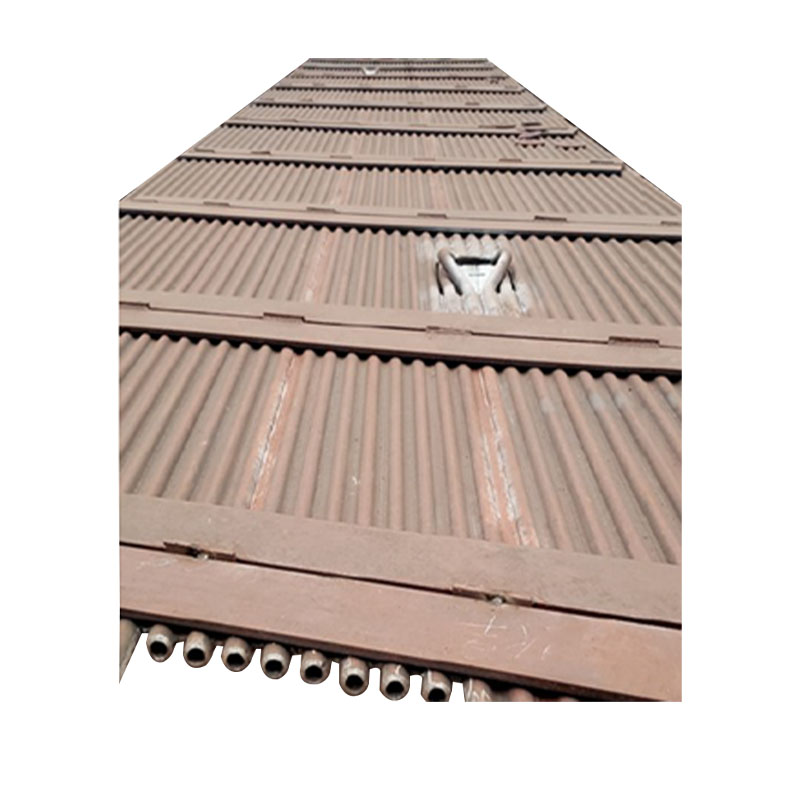How can we precisely customize water wall structures based on customer drawings to meet the unique needs of different furnace types and operating conditions?
Release Time : 2025-09-29
In the design of boiler, waste heat recovery boiler, and high-temperature industrial furnace systems, the water wall is not only a critical heat-absorbing surface that withstands high-temperature radiation, but also a core component that maintains the stability of the furnace structure and ensures high thermal efficiency. Different furnace types—whether power plant boilers, industrial circulating fluidized beds, or specialized furnaces in metallurgy and chemical industries—have varying operating temperatures, pressure parameters, combustion methods, and spatial layouts, posing highly differentiated technical requirements on the water wall's structure, pipe arrangement, connection method, and pressure-bearing capacity. Generic products cannot meet these complex requirements; only precise customization based on customer drawings can ensure that the water wall perfectly matches the overall system, achieving safe, efficient, and long-term operation.
The starting point for precise customization lies in a deep understanding of the customer's technical requirements. Every drawing encapsulates specific engineering needs: the specifications and spacing of the pipes, the width and thickness of the fins, the location of the header connections, the inlet and outlet directions, the support structure, and the overall dimensions—all meticulously designed based on thermal calculations, fluid dynamics simulations, and site installation conditions. The manufacturing company must possess the ability to translate two-dimensional drawings into three-dimensional reality, ensuring that every detail is accurately reproduced. From pipe material selection to pipe bending, from cutting to welding and positioning, every step must be strictly executed according to the drawings, avoiding dimensional errors due to misinterpretation or ingrained manufacturing practices.
A diverse range of manufacturing processes is crucial for realizing complex customized structures. Water walls are typically constructed by welding multiple steel pipes and fins together, forming a large-area panel. For long, straight weld seams, submerged arc welding machines can achieve deep penetration, uniform, and continuous welds, ensuring a dense, defect-free weld while significantly improving production efficiency. However, for irregularly shaped bends, dense pipe arrays, or restricted spaces, automated equipment may not be suitable. In these cases, experienced manual welders play an irreplaceable role. With their precise control of welding heat input, angle, and layer thickness, they perform intricate work that automation cannot handle, ensuring that every weld meets the pressure requirements. Gas-shielded arc welding automation technology demonstrates its efficiency and stability advantages in critical applications such as tube panel assembly and header connection. It enables high-quality weld deposition under a protective gas atmosphere, reducing oxidation and spatter, and improving weld bead appearance. In particular, for thin-walled tubes or alloy steel materials, gas-shielded arc welding provides more precise control of the heat-affected zone, effectively preventing material property degradation. The synergistic application of various welding processes allows manufacturers to flexibly address the diverse material, thickness, and structural requirements of waterwall manufacturing.
Customization also extends to adapting to specific operating conditions. For example, in high-temperature corrosive environments, customers may require specific alloy materials or additional corrosion-resistant coatings for the fins; in areas with high vibration or frequent thermal expansion and contraction, optimized support structures and expansion joint designs are necessary. The manufacturer must adhere to the technical specifications in the drawings, collaborating with material suppliers and testing agencies to ensure all special requirements are met during production. Non-destructive testing of welds, overall pressure testing, and dimensional verification are all strictly performed according to customer standards, guaranteeing the product's reliability for on-site installation.
Furthermore, the modular assembly concept enhances the value of customized services. For large boilers, waterwalls can be manufactured in sections, forming independent tube panel modules. On-site assembly then involves only connection and sealing welds, significantly reducing high-altitude work and construction time. This "factory prefabrication, on-site assembly" approach not only improves installation accuracy but also reduces on-site construction risks.
Ultimately, customized waterwall manufacturing is a precise transformation from blueprint to reality. It is not merely following a blueprint; it is a comprehensive test of materials, processes, expertise, and quality control. When every panel perfectly conforms to the design specifications, and every weld withstands rigorous testing, this meticulous attention to detail is the core value of high-end equipment manufacturing. It transforms the waterwall from a mere component of the boiler into a robust safeguard for the entire system's safe operation.
The starting point for precise customization lies in a deep understanding of the customer's technical requirements. Every drawing encapsulates specific engineering needs: the specifications and spacing of the pipes, the width and thickness of the fins, the location of the header connections, the inlet and outlet directions, the support structure, and the overall dimensions—all meticulously designed based on thermal calculations, fluid dynamics simulations, and site installation conditions. The manufacturing company must possess the ability to translate two-dimensional drawings into three-dimensional reality, ensuring that every detail is accurately reproduced. From pipe material selection to pipe bending, from cutting to welding and positioning, every step must be strictly executed according to the drawings, avoiding dimensional errors due to misinterpretation or ingrained manufacturing practices.
A diverse range of manufacturing processes is crucial for realizing complex customized structures. Water walls are typically constructed by welding multiple steel pipes and fins together, forming a large-area panel. For long, straight weld seams, submerged arc welding machines can achieve deep penetration, uniform, and continuous welds, ensuring a dense, defect-free weld while significantly improving production efficiency. However, for irregularly shaped bends, dense pipe arrays, or restricted spaces, automated equipment may not be suitable. In these cases, experienced manual welders play an irreplaceable role. With their precise control of welding heat input, angle, and layer thickness, they perform intricate work that automation cannot handle, ensuring that every weld meets the pressure requirements. Gas-shielded arc welding automation technology demonstrates its efficiency and stability advantages in critical applications such as tube panel assembly and header connection. It enables high-quality weld deposition under a protective gas atmosphere, reducing oxidation and spatter, and improving weld bead appearance. In particular, for thin-walled tubes or alloy steel materials, gas-shielded arc welding provides more precise control of the heat-affected zone, effectively preventing material property degradation. The synergistic application of various welding processes allows manufacturers to flexibly address the diverse material, thickness, and structural requirements of waterwall manufacturing.
Customization also extends to adapting to specific operating conditions. For example, in high-temperature corrosive environments, customers may require specific alloy materials or additional corrosion-resistant coatings for the fins; in areas with high vibration or frequent thermal expansion and contraction, optimized support structures and expansion joint designs are necessary. The manufacturer must adhere to the technical specifications in the drawings, collaborating with material suppliers and testing agencies to ensure all special requirements are met during production. Non-destructive testing of welds, overall pressure testing, and dimensional verification are all strictly performed according to customer standards, guaranteeing the product's reliability for on-site installation.
Furthermore, the modular assembly concept enhances the value of customized services. For large boilers, waterwalls can be manufactured in sections, forming independent tube panel modules. On-site assembly then involves only connection and sealing welds, significantly reducing high-altitude work and construction time. This "factory prefabrication, on-site assembly" approach not only improves installation accuracy but also reduces on-site construction risks.
Ultimately, customized waterwall manufacturing is a precise transformation from blueprint to reality. It is not merely following a blueprint; it is a comprehensive test of materials, processes, expertise, and quality control. When every panel perfectly conforms to the design specifications, and every weld withstands rigorous testing, this meticulous attention to detail is the core value of high-end equipment manufacturing. It transforms the waterwall from a mere component of the boiler into a robust safeguard for the entire system's safe operation.







